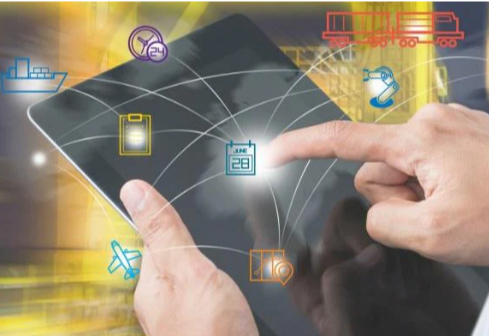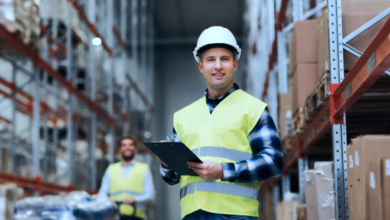How B2B Portal Development Supports Digital Supply Chains

Supply chains are undergoing a fundamental shift. Once reliant on manual processes and fragmented systems, they are now moving toward digital-first operations. Businesses recognize that efficiency, trust, and adaptability depend on how quickly information flows across the network.
For C-suite executives and supply chain leaders, this means rethinking how systems connect suppliers, distributors, and buyers. Traditional ERP platforms and email-based communication leave too many gaps. What’s needed is a connected infrastructure that supports agility, visibility, and collaboration.
This is where B2B portal development has become critical. A portal today is not just a place to transact—it’s the backbone of an intelligent supply network. When built with the right strategy, including custom portal development, it enables enterprises to unify procurement, logistics, compliance, and sustainability into one digital hub.
The New Role of B2B Portals in Digital Supply Chains
Supply chains have moved far beyond procurement. They now function as dynamic ecosystems where suppliers, manufacturers, distributors, and buyers must collaborate in real time to keep operations agile and resilient. In this environment, B2B portals are no longer back-office tools—they have become the digital backbone of supply networks.
Modern B2B portals now serve multiple roles:
- Procurement Hubs: Automating purchase orders, invoicing, and reordering workflows to reduce manual errors and speed up transactions.
- Collaboration Platforms: Connecting diverse stakeholders across geographies, time zones, and business units, ensuring seamless communication and knowledge sharing.
- Visibility Engines: Providing end-to-end tracking of inventory, shipments, supplier performance, and potential risks—turning fragmented data into actionable insights.
- Compliance & Reporting Centers: Streamlining audits, certifications, and sustainability reporting, making regulatory and ESG compliance transparent and efficient.
This shift demonstrates how B2B portals have evolved from functional utilities to foundational systems. They don’t just support supply chain operations—they actively shape how networks operate, adapt to disruptions, and stay competitive in global markets.
From Transactional to Transformational
With this shift in perspective, the purpose of B2B portals has changed dramatically.
Traditional portals were transactional
- Buyers placed orders
- Suppliers fulfilled them
- Information was limited to the exchange itself
Modern portals are transformational
- They connect fragmented systems across the value chain
- They provide visibility into shared data for decision-making
- They enable predictive planning rather than reactive firefighting
By moving beyond transactions, B2B portals act as strategic enablers. They build supply chains that are not just efficient but also adaptive to disruptions.
Enhancing Supply Chain Visibility Through B2B Portals
One of the most significant contributions of B2B portals is visibility. Disconnected data silos have historically made supply chains reactive. Portals aggregate information from multiple systems into one accessible platform.
What this delivers
- Centralized dashboards for leaders to view orders, shipments, and inventory
- Predictive insights to detect bottlenecks before they escalate
- Supplier performance monitoring for continuous improvement
With visibility, businesses can reduce surprises and make informed decisions at speed.
Role of IoT and AI in Visibility
Visibility becomes even more powerful when paired with IoT and AI.
- IoT sensors: Track goods in transit, monitor temperature for perishables, and provide live updates on location
- AI forecasting models: Predict demand spikes, detect risk patterns, and recommend proactive interventions
For example, a manufacturer can detect shipment delays through IoT sensors and use AI-driven predictions to reroute supplies. These capabilities turn portals into real-time command centers for supply networks.
Streamlining Procurement and Supplier Collaboration
Procurement and supplier collaboration remain at the core of supply chain operations. B2B portals now bridge gaps between disparate buyer and supplier systems.
Capabilities include
- Automated purchase workflows that reduce manual errors
- Vendor management modules that centralize supplier data, certifications, and performance metrics
- Shared communication channels for faster resolution of queries
The result is stronger supplier relationships built on transparency, speed, and accountability.
Smart Contracting and Compliance
Trust is central to supply chain collaboration. Modern portals embed compliance and contract management to reduce disputes and delays.
- Digital contracts: Allow businesses to establish agreements that are easily traceable
- Blockchain add-ons: Ensure authenticity by recording transactions on tamper-proof ledgers
- Automated compliance checks: Flag potential risks early, reducing costly regulatory penalties
This creates an environment where suppliers and buyers engage with confidence, knowing rules are enforced fairly and consistently.
Driving Efficiency with Automation and Self-Service Models
Efficiency is no longer about cost-cutting alone—it’s about reducing friction in day-to-day operations. B2B portals now embed automation and self-service capabilities to improve flow.
Examples
- Automated reordering triggers for frequently purchased items
- Self-service dashboards where suppliers can update orders, upload documents, and track payments
- Integration with ERP systems to reduce redundant data entry
This automation frees human teams to focus on strategic priorities rather than repetitive tasks.
AI-Powered Chatbots and Virtual Assistants
Another layer of efficiency comes from AI-driven assistants within portals.
Benefits include
- 24/7 query handling for suppliers and buyers
- Quick access to order status, invoice queries, and shipment updates
- Reduced dependency on human support teams
By handling routine questions instantly, chatbots improve satisfaction while reducing operational costs.
Integrating Sustainability Into Digital Supply Chains via B2B Portals
Sustainability is now a boardroom priority. Customers, regulators, and investors demand transparency into sourcing practices, carbon footprints, and ethical standards.
B2B portals are evolving to embed sustainability into core supply chain operations.
Capabilities include
- Tracking the carbon impact of shipments
- Highlighting supplier compliance with eco-friendly standards
- Providing visibility into ethical sourcing practices
This makes sustainability measurable, reportable, and actionable.
ESG Dashboards and Reporting
Going deeper, portals now provide ESG (Environmental, Social, Governance) dashboards.
These dashboards deliver
- A single view of compliance across environmental and ethical benchmarks
- Insights into suppliers’ sustainability practices
- Reports for investors and regulators showing progress toward ESG commitments
With these capabilities, businesses can choose partners transparently and align supply chains with global sustainability goals.
Future-Forward: Adaptive B2B Portals for Resilient Supply Chains
As markets face disruptions, the need for adaptive systems grows. Future-ready B2B portals are built with interoperability and flexibility at their core.
Trends shaping adaptive portals
- Hyper-personalization using AI, adapting experiences for different suppliers and buyers
- Seamless integration with multiple ERP and logistics platforms
- Continuous updates to evolve with regulatory and market changes
These adaptive capabilities turn portals into resilient systems that grow stronger with every disruption.
Read Also: Mice Removal Techniques for Effective and Safe Pest Control
Preparing for Industry 5.0
Looking even further ahead, Industry 5.0 is redefining supply chains around human-centric technologies. It combines automation with collaborative decision-making between humans and AI.
In this context, the B2B portal becomes
- A living ecosystem where human intelligence and AI insights work together
- A platform where automation handles repetitive tasks while humans focus on strategy
- A connector of ecosystems, adapting as supply networks expand globally
Industry 5.0 will demand supply chains that are flexible, sustainable, and collaborative—and B2B portals are the foundation for making that vision real.
Conclusion
B2B portal development has become the cornerstone of modern digital supply chains, transforming them from fragmented networks into intelligent, collaborative ecosystems. No longer limited to procurement or transactions, today’s portals provide real-time visibility, predictive insights, and automation that enable enterprises to anticipate challenges, strengthen supplier relationships, and streamline operations.
By integrating AI, IoT, blockchain, and sustainability frameworks, B2B portals now serve as both control centres and growth enablers. They make supply chains more transparent, adaptive, and resilient—qualities that are essential in an era of global uncertainty and rising customer expectations.
As enterprises move toward Industry 5.0, B2B portals will evolve into human-AI collaboration hubs where efficiency meets empathy, and innovation meets responsibility. The organizations that embrace portals as strategic assets—not just digital tools—will be the ones to build resilient, sustainable, and future-ready supply chains.





